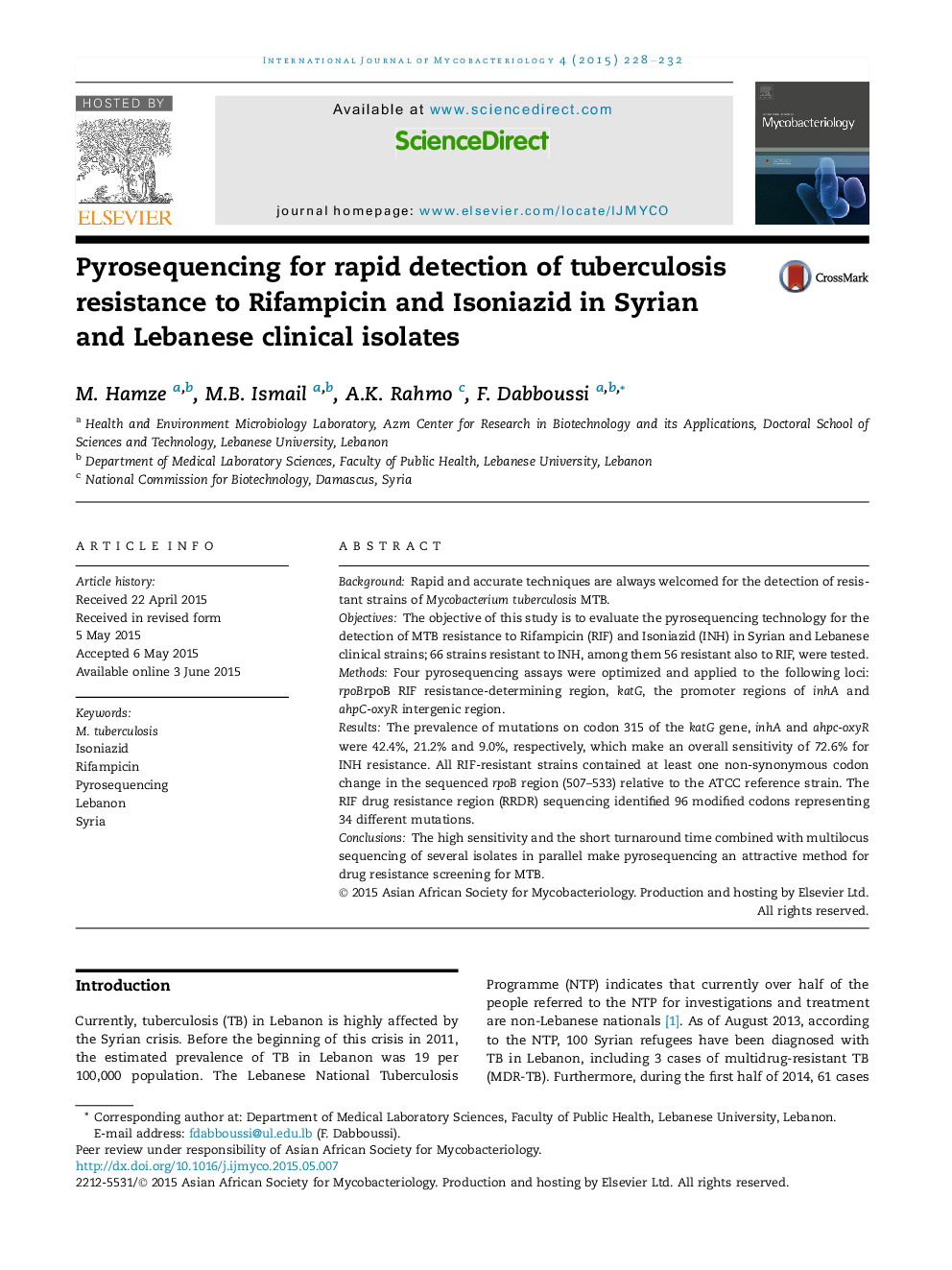| Article ID | Journal | Published Year | Pages | File Type |
|---|---|---|---|---|
| 3405128 | International Journal of Mycobacteriology | 2015 | 5 Pages |
BackgroundRapid and accurate techniques are always welcomed for the detection of resistant strains of Mycobacterium tuberculosis MTB.ObjectivesThe objective of this study is to evaluate the pyrosequencing technology for the detection of MTB resistance to Rifampicin (RIF) and Isoniazid (INH) in Syrian and Lebanese clinical strains; 66 strains resistant to INH, among them 56 resistant also to RIF, were tested.MethodsFour pyrosequencing assays were optimized and applied to the following loci: rpoBrpoB RIF resistance-determining region, katG, the promoter regions of inhA and ahpC-oxyR intergenic region.ResultsThe prevalence of mutations on codon 315 of the katG gene, inhA and ahpc-oxyR were 42.4%, 21.2% and 9.0%, respectively, which make an overall sensitivity of 72.6% for INH resistance. All RIF-resistant strains contained at least one non-synonymous codon change in the sequenced rpoB region (507–533) relative to the ATCC reference strain. The RIF drug resistance region (RRDR) sequencing identified 96 modified codons representing 34 different mutations.ConclusionsThe high sensitivity and the short turnaround time combined with multilocus sequencing of several isolates in parallel make pyrosequencing an attractive method for drug resistance screening for MTB.
